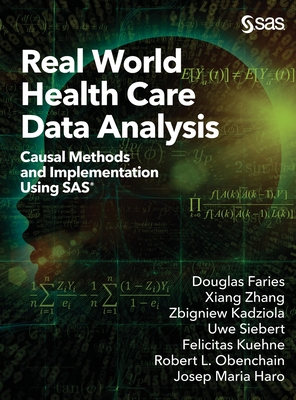Analysis of Safety Data of Drug Trials: An Update
暫譯: 藥物試驗安全數據分析:最新進展
Cleophas, Ton J., Zwinderman, Aeilko H.
- 出版商: Springer
- 出版日期: 2019-03-08
- 售價: $4,660
- 貴賓價: 9.5 折 $4,427
- 語言: 英文
- 頁數: 217
- 裝訂: Hardcover - also called cloth, retail trade, or trade
- ISBN: 3030058034
- ISBN-13: 9783030058036
-
相關分類:
機率統計學 Probability-and-statistics
海外代購書籍(需單獨結帳)
相關主題
商品描述
An effective approach is to present summaries of the prevalence of adverse effects and their 95% confidence intervals. In order to estimate the probability that the differences between treatment and control group occurred merely by chance, a statistical test can be performed. In the past few years, this pretty crude method has been supplemented and sometimes, replaced with more sophisticated and better sensitive methodologies, based on machine learning clusters and networks, and multivariate analyses. As a result, it is time that an updated version of safety data analysis was published.
The issue of dependency also needs to be addressed. Adverse effects may be either dependent or independent of the main outcome. For example, an adverse effect of alpha blockers is dizziness and this occurs independently of the main outcome "alleviation of Raynaud 's phenomenon." In contrast, the adverse effect "increased calorie intake" occurs with "increased exercise," and this adverse effect is very dependent on the main outcome "weight loss." Random heterogeneities, outliers, confounders, interaction factors are common in clinical trials, and all of them can be considered as kinds of adverse effects of the dependent type. Random regressions and analyses of variance, high dimensional clusterings, partial correlations, structural equations models, Bayesian methods are helpful for their analysis.
The current edition was written for non-mathematicians, particularly medical and health professionals and students. It provides examples of modern analytic methods so far largely unused in safety analysis. All of the 14 chapters have two core characteristics, First, they are intended for current usage, and they are particularly concerned with that usage. Second, they try and tell what readers need to know in order to understand and apply the methods. For that purpose, step by step analyses of both hypothesized and real data examples are provided.商品描述(中文翻譯)
在2010年,Springer出版了《應用於臨床研究的統計學》第五版,自那時以來廣泛發行。新藥臨床試驗的主要目的是證明其療效,而非安全性。然而,對於人類的試驗如果未能充分考慮安全性則是不道德的,而安全變數的評估是試驗的重要元素。
一種有效的方法是呈現不良反應的發生率及其95%信賴區間的摘要。為了估計治療組和對照組之間的差異僅僅是偶然發生的概率,可以進行統計檢定。在過去幾年中,這種相當粗糙的方法已被更複雜且敏感度更高的技術所補充,有時甚至取而代之,這些技術基於機器學習的聚類和網絡,以及多變量分析。因此,現在是時候發布更新版本的安全數據分析了。
此外,依賴性的問題也需要被解決。不良反應可能是依賴於主要結果或獨立於主要結果的。例如,α-阻滯劑的不良反應是頭暈,這與主要結果「雷諾現象的緩解」無關。相反,不良反應「增加卡路里攝入」是與「增加運動」相關的,這種不良反應非常依賴於主要結果「減重」。隨機異質性、異常值、混雜因子和交互因子在臨床試驗中很常見,所有這些都可以被視為依賴型不良反應的類型。隨機回歸和變異數分析、高維聚類、部分相關、結構方程模型、貝葉斯方法對於這些分析是有幫助的。
目前的版本是為非數學家撰寫的,特別是醫療和健康專業人員及學生。它提供了現代分析方法的例子,這些方法在安全分析中尚未得到廣泛使用。所有14章都有兩個核心特徵。首先,它們旨在當前使用,並特別關注該使用。其次,它們試圖告訴讀者理解和應用這些方法所需的知識。為此,提供了假設數據和實際數據示例的逐步分析。
作者簡介
Professor Zwinderman is one of the Principle Investigators of the Academic Medical Center Amsterdam, and his research is concerned with developing statistical methods for new research designs in biomedical science, particularly integrating omics data, like genomics, proteomics, metabolomics, and analysis tools based on parallel computing and the use of cluster computers and grid computing.
Professor Cleophas is a member of the Academic Committee of the European College of Pharmaceutical Medicine, that provides, on behalf of 22 European Universities, the Master-ship trainings "Pharmaceutical Medicine" and "Medicines Development."
From their expertise they should be able to make adequate selections of modern methods for clinical data analysis for the benefit of physicians, students, and investigators. The authors have been working and publishing together for 18 years, and their research can be characterized as a continued effort to demonstrate that clinical data analysis is not mathematics but rather a discipline at the interface of biology and mathematics.
The authors as professors and teachers in statistics at universities in The Netherlands and France for the most part of their lives, are concerned, that their students find regression-analyses harder than any other methodology in statistics. This is serious, because almost all of the novel methodologies in current data mining and data analysis include elements of regression-analysis, and they do hope that the current production "Regression Analysis for Starters and 2nd Levelers" will be a helpful companion for the purpose. Five textbooks complementary to the current production and written by the same authors are
Statistics applied to clinical studies 5th edition, 2012, Machine learning in medicine a complete overview, 2015, SPSS for starters and 2nd levelers 2nd edition, 2015, Clinical data analysis on a pocket calculator 2nd edition, 2016, Modern Meta-analysis, 2017Regression Analysis in Medical Research, 2018 all of them published by Springer
作者簡介(中文翻譯)
作者在其領域中具備良好的資格。Zwinderman 教授曾擔任國際生物統計學會的會長(2012-2015),而 Cleophas 教授則曾擔任美國血管學會的會長(2000-2002)。Zwinderman 教授是阿姆斯特丹學術醫療中心的主要研究者之一,他的研究專注於為生物醫學科學中的新研究設計開發統計方法,特別是整合基因組學(genomics)、蛋白質組學(proteomics)、代謝組學(metabolomics)等 omics 數據,以及基於平行計算和使用叢集計算機和網格計算的分析工具。Cleophas 教授是歐洲藥物醫學學院的學術委員會成員,該委員會代表22所歐洲大學提供「藥物醫學」和「藥物開發」的碩士培訓。基於他們的專業知識,他們應能夠為醫生、學生和研究人員選擇適當的現代臨床數據分析方法。作者們已經合作並發表研究18年,他們的研究可以被描述為持續努力證明臨床數據分析不是數學,而是一個生物學與數學交界的學科。作為荷蘭和法國大學的統計學教授和教師,作者們關心的是他們的學生認為回歸分析比統計學中的其他方法更難。這是嚴重的,因為當前數據挖掘和數據分析中的幾乎所有新方法都包含回歸分析的元素,他們希望目前的作品《初學者和二級學習者的回歸分析》能成為有用的伴侶。與目前作品互補的五本教科書由同一作者撰寫,分別是《應用於臨床研究的統計學 第五版,2012年》、《醫學中的機器學習 完整概述,2015年》、《初學者和二級學習者的 SPSS 第二版,2015年》、《口袋計算器上的臨床數據分析 第二版,2016年》、《現代元分析,2017年》、《醫學研究中的回歸分析,2018年》,所有書籍均由 Springer 出版。












